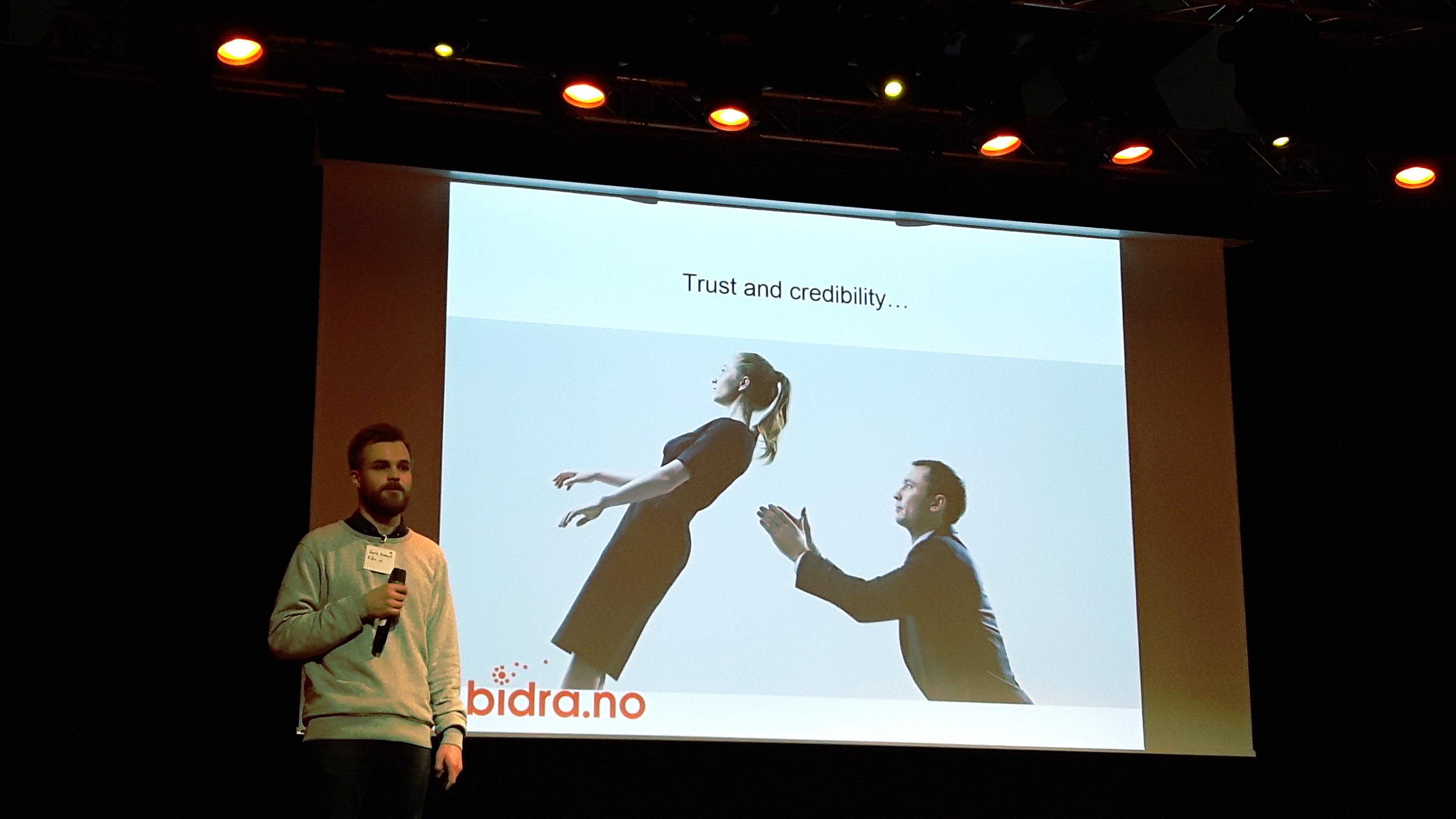A visit at the Nordic Crowdfunding Event in Helsinki last week (http://nca17.mesenaatti.me/ ) both increased our understanding of the market and gave ideas for NutriTrade platform development and exit strategy.
Crowdfunding market in a nutshell
According to the Chair of the conference, Dr. Rotem Shneor (University of Agder School of Business and Law), crowdfunding is growing rapidly thanks to recent developments in innovation and digitalisation – and due to financial crises. Crowdfunding is alternative finance and contributes to the democratisation of funding.
The crowdfunding concept closest to NutriTrade, donation-based crowdfunding, is small compared to reward and equity crowdfunding and P2P lending (2 % of the total crowdfunding volume only). However, donation-based crowdfunding has been growing steadily with an average annual growth rate of 39 %, and it totalled 36 MEUR in 2015. The major markets are the UK (14 MEUR), Germany (10 MEUR) and Spain (3 MEUR).
The most funded models in donation-based crowdfunding are charity & philanthropy, health & social work and community & social enterprise. The average campaign size is small, little less than 3,000 EUR, and on average, the campaigns have 33 donors (which is less than half the average number for reward-based crowdfunding at 85 backers per campaign).
92 % of the donation-based crowdfunding platforms are not owned by any financial institutions.
An interesting observation is that donation-based crowdfunding has the highest levels of female participation. In the UK, 65 % of fundraisers and 55 % of funders are female. In rest of Europe, 54% of the fundraisers and 48% of funders are women.
In Nordic countries, donation-based crowdfunding is estimated at 2.5 MEUR (consisting of Denmark (2.3 MEUR) and Norway (0.2 MEUR)). The average successful campaign size is nearly 6,000 EUR and the average number of backers 44. In Poland, donation-based crowdfunding is estimated at 0.7 MEUR.
Success factors for platforms
Many speakers emphasised that platforms should concentrate on why people donate, and not on how they would like to donate. After all, people are most interested in projects that make an impact and the main motivation for investing in a campaign is to be part of a phenomenon.
The main decision criteria are related to campaign specifications as well as to familiarity and to personal acquaintance with the topic and the campaigners. Thus it is crucial to make it clear what the campaign is about, to explain the planned use of funds and the uniqueness of the results and to actively campaign to reach supporters.
Fundraising is basically a marketing campaign which makes heavy of use of social media. Some established platforms even offer marketing services to their customers. They give the following tips to campaigners:
- You need a passionate community to make your campaign a success. Use your own networks first, start with your contacts and ask them to share.
- Pre-marketing ensures a flying start for the campaign. It is important that fundraising starts well – people want to be part of a successful campaign.
- It is essential to have lot of traffic to your campaign site as the conversion rate (how many of the visitors donate) is low. You must keep the campaign alive with updates and real time responses.
- You must not give up! After the start, there will be very quiet but the speed will accelerate in the end.
On a project level, there are tremendous success stories. Exceptional projects were presented by several major platforms (Icelandic Karolina Fund, Norwegian Bidra, Norwegian and Danish Sponsor.me and Finnish Mesenaatti.me and Invesdor. There were several cases, where a dramatic positive change of course had happened on the very last day, resulting in a successful campaign.
Food for thought for NutriTrade
Our efforts to establish a crowdfunding platform for the Baltic Sea have focused on building the framework for the meeting of project owners and donors, i.e. developing the software and necessary guidelines and contracts. Clearly, additional efforts will need to be directed to building credibility and to increasing the visibility of the platform and its campaigns. Towards this end, attention will next be paid to verification mechanisms and marketing activities.
During the day, it became clear the Finnish money collection act is unique and makes Finland a complex operating environment for donation-based crowdfunding. In other Baltic Sea countries, donation-based crowdfunding is possible under existing regulations and with less administrative burden.
We are very happy for hearing industry experiences and latest research on crowdfunding, for learning some lessons from success stories and – last but not least – for contacts that enable us to evaluate cooperation possibilities with existing platforms.

